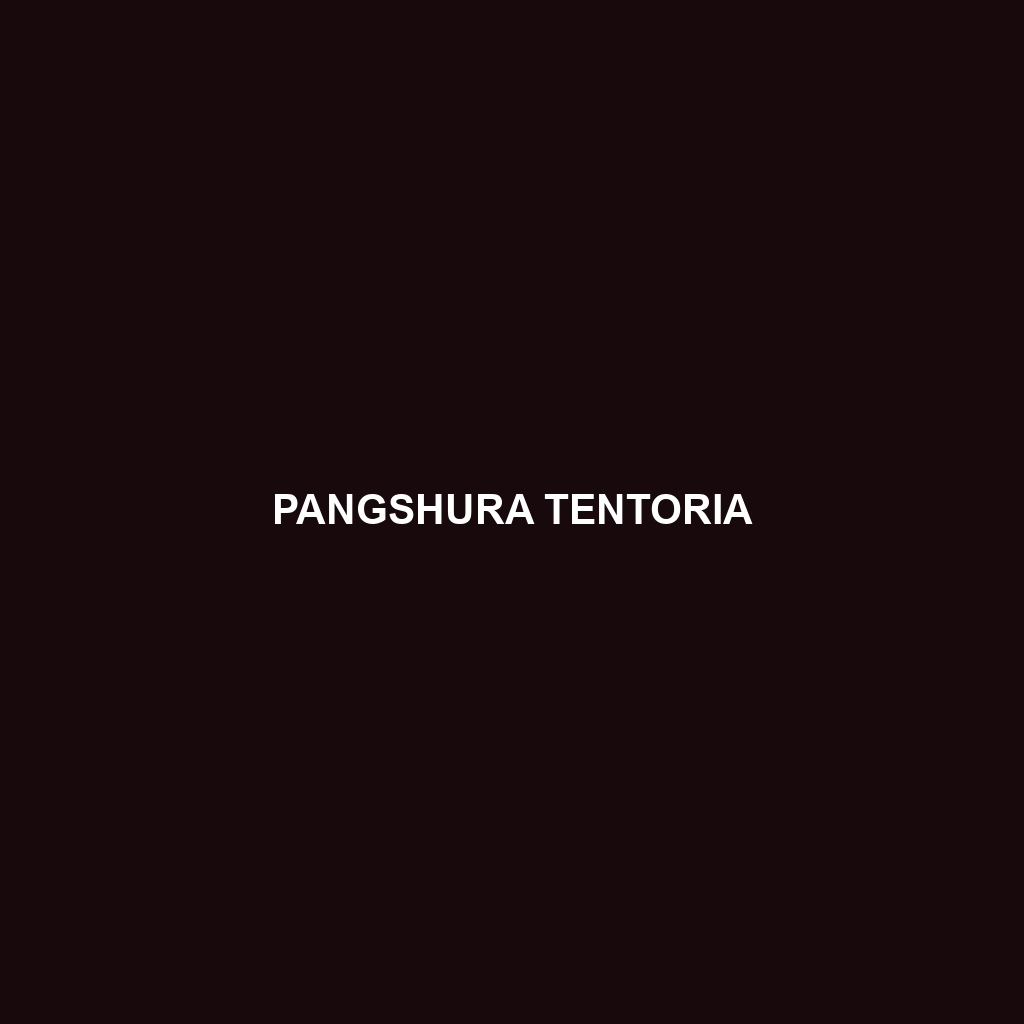Common Name
Pangshura tentoria
Scientific Name
Pangshura tentoria
Habitat
Pangshura tentoria is primarily found in a variety of habitats across its geographic range, which includes the lush environments of southern Asia. It thrives in areas such as freshwater rivers, ponds, and marshes. This semi-aquatic species is especially prevalent in tropical and subtropical regions, where the climate offers warm temperatures and abundant water sources. These habitats are characterized by dense vegetation, providing ample cover and nesting sites. The species is often observed in rainforests and nearby savannas, where humidity is high and food sources are plentiful. Additionally, wetlands and temperate forests adjacent to these water bodies also serve as ideal environments for Pangshura tentoria.
Physical Characteristics
Pangshura tentoria exhibits several distinctive physical features that set it apart from other turtles. Typically, this species reaches an average length of 20 to 40 centimeters, with a somewhat flattened shell that is oval-shaped and may display a pattern of intricate markings. The carapace is generally brown to olive in color, often featuring yellowish or cream-colored stripes that enhance its camouflage in the wild. Adult Pangshura tentoria are easily identified by their long necks and relatively large heads, which help them forage effectively. Their limbs are strong and webbed, enabling adept swimming and efficient movement both in water and on land.
Behavior
The behavioral patterns of Pangshura tentoria are intriguing and adaptive. Primarily diurnal, this species exhibits a range of social interactions within its natural habitat. During mating seasons, males showcase complex courtship strategies, including head bobbing and displays of aggressive behavior to compete for females. They also engage in basking, often seen sunning themselves on logs or rocks during the day to regulate their body temperature—a typical behavior observed in reptiles. While Pangshura tentoria is not migratory, it can be territorial, particularly during breeding seasons, showing a more pronounced social structure among individuals.
Diet
Pangshura tentoria is primarily herbivorous, with its diet consisting of a wide range of aquatic and semi-aquatic plants. Common food sources include various types of algae, water lilies, and leaves of submerged plants. However, they are also known to consume small invertebrates, which makes them somewhat of an omnivore. Their feeding habits are influenced by seasonal changes and the availability of food sources, ensuring they are adaptable in their dietary preferences. During periods of drought or low water levels, they have been observed feeding on grasses and other terrestrial vegetation.
Reproduction
The reproductive cycle of Pangshura tentoria takes place during the warmer months, typically between late spring and early summer. Males reach sexual maturity around 3 to 5 years, while females may take longer, reaching maturity in about 5 to 7 years. After a successful courtship and mating process, the female lays a clutch of 3 to 20 eggs, which she buries in sandy or soft soil near water bodies. The incubation period lasts approximately 60 to 80 days, after which hatchlings emerge and instinctively head towards the water. Parental care is minimal, as once the eggs are laid, the female departs, leaving the young to fend for themselves. This independence is crucial for survival in their natural habitats.
Conservation Status
Currently, Pangshura tentoria is classified as vulnerable due to habitat destruction and overexploitation. The primary threats include habitat loss from urban development, pollution, and illegal wildlife trade. Conservation efforts are vital, and initiatives focusing on habitat protection and public awareness campaigns are underway to mitigate these threats. Various environmental organizations are advocating for the conservation of wetland habitats to ensure the long-term survival of this species. Breeding programs have also been considered to support dwindling populations.
Interesting Facts
Pangshura tentoria showcases some remarkable adaptations to its environment. For instance, it possesses the ability to hold its breath for extended periods, allowing it to dive and forage effectively in search of food. Additionally, this species displays remarkable swimming agility, aided by its strong, webbed feet. Interestingly, it also exhibits personality traits, with some individuals displaying more exploratory behavior than others, indicating a level of cognitive complexity not commonly associated with reptiles.
Role in Ecosystem
Pangshura tentoria plays a crucial role in its ecosystem, primarily as a consumer of aquatic vegetation, thus helping maintain the health of aquatic plant populations. By feeding on algae and invasive plant species, they assist in regulating water quality and promoting biodiversity in their habitats. Their presence in the ecosystem contributes to nutrient cycling, as their waste products enrich the water and provide essential nutrients for other organisms, making them significant in the balance of aquatic ecosystems. Furthermore, they serve as prey for larger species, thereby maintaining the ecological food web.
